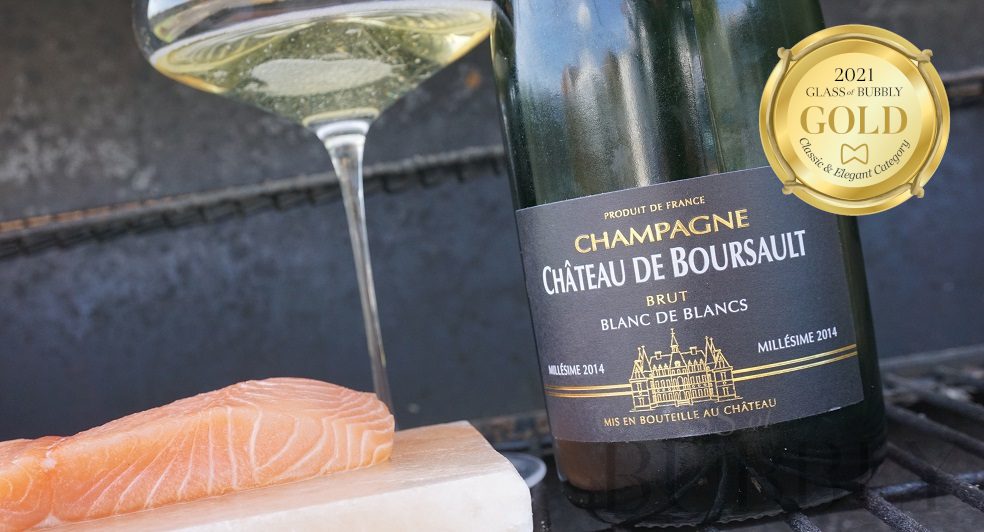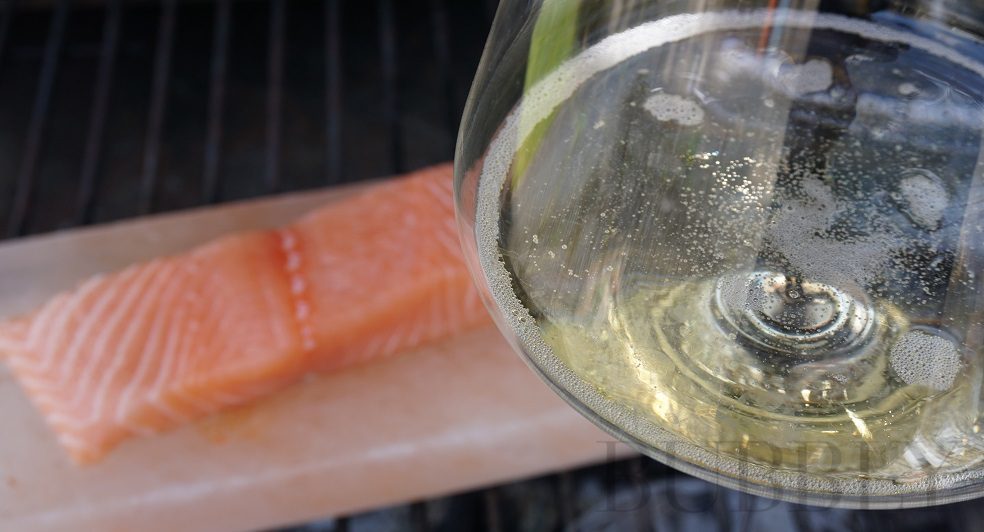Champagne and Salmon
29th June 2022

If we dive into the ocean for a minute we’ll soon come into contact with one of the stars of this article, we often enjoy the savoury, salty flavours of Salmon, a fish, that if left alone, will die in the place it was born.
Our second star of this article comes from the grounds on which one of the most magnificent Cháteaus in all of France sits, built by the orders of Madame Clicquot in 1843, on the left bank of the Marne valley, just 10km west of Epernay. The Cháteau was even built upon the ruins of a fortified castle that once belonged to the Barons of Boursault.

Other than its famous creation, it was also held dear to many war veterans, during both World War I and World War II, the Château was converted into a military hospital, healing many wounded, one instance, in particular, was in 1945, when it was transformed into a ‘Rescue Hospital’ ready to receive the wounded from the famous 101st airborne division of the American forces, who were returning from the battle of Bastogne, in Belgium. The unit may also be known by its nickname, the ‘Screaming Eagle’ who amongst other accomplishments, distinguished themselves for their remarkable work during the Normandy landings in June 1944.

Champagne Cháteau De Boursault – Blanc de Blancs 2014 – Tasting Notes
Aroma 👃 “Delicate yellow fruits, yellow stone fruits, citrus, yellow floral, and yeasty notes on the aroma.”
Flavour 👅 “Yellow stone fruits, citrus, yellow floral and soft yeasty flavours.”
Gold Medal Winner in the Classic & Elegant Category at the Glass of Bubbly Awards 2021
Cháteau De Boursault sticks solely to the main 3 Champagne grape varieties, Pinot Noir, Pinot Meunier and Chardonnay, if you ever decide to plan a trip to the Champagne region (you really should) then check out A Trip To Champagne Château de Boursault to see if it should be on your itinerary (it should)
Under the sea, Darling it’s better, Down where it’s wetter, Take it from me!

A female Salmon can lay between 1,500 to 10,000 eggs, but unfortunately, only between 0 to 10 will reach adulthood. The mother will cover her eggs with gravel to protect them from predators, sometimes reaching several centimeters down.
After the eggs have been laid and covered, the mother no longer has any contact with her young, she will never see them hatch. Salmon reduce their eating after reproduction and use all their energy swimming upstream.
A baby Salmon, (a fry) has hatched after 6 to 12 weeks in a river or stream, once it has left the egg, it may only be surrounded by its siblings, young Salmon will feed on little insects and sometime during late spring, once they have reached a good size, they will venture out into the open ocean for a life of exploration.
The life span of a salmon can last between 0 to 7 years, with the average adult living around 4-5 years, once they get older and bigger, Salmon will start to feast on other fishes they find.
If they haven’t been eaten by another fish or captured by fishermen, then near the end of a salmon’s life will return to its birthplace, they do this because they know it’s a safe place to lay eggs, Scientists don’t know for sure, but believe that the salmon navigates its way home by using the earth’s magnetic field as its compass.
One of the best places to watch Salmon jumping upstream is in Mission Creek in Kelowna, British Columbia, Canada, you’ve all probably seen a video or picture of it happening, but it’s a different experience when you see it in real life, just make sure you’re not on the same side as a grizzle bear, they can be very mean when they’re hungry.
Once the Salmon has arrived back at its birthplace, it will lay its eggs, giving way to the next generation of little Salmon, and then shortly after, passing away.
The Champagne and Salmon Pairing
The inspiration behind this article came when SousChef sent us their Himalayan Salt Plate, at first, I had no idea how to use it, but the food placed upon it naturally absorbs salt and healthy minerals, which enhance the flavour of your food, you can use it by heating it up and cooking on it, or cooling it down.
I’ve cooled it down and placed a raw piece of Salmon on top, letting it do its job, while I popped open a bottle of Champagne to pair with this lovely piece of Salmon.
Pairing Notes – “The salt plate works perfectly, adding a layer of salt to the bottom of the fish. The Champagne comes through and knocks the salty flavours down, cleansing the palate, adding in lovely yellow stone fruits and yellow floral, then after the mid-palate, the savoury salmon flavours come back into full swing and combine with the Champagne, this tastes like a true Classic & Elegant Pairing.”

Information Credit: Salmon Life Cycle
![]()
Oliver Walkey
Champagne and Sparkling Wine Writer, Focused on Bringing the Exciting and Fascinating World of Bubbly to You.
